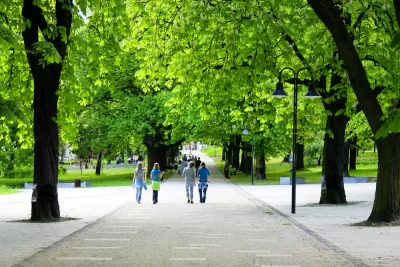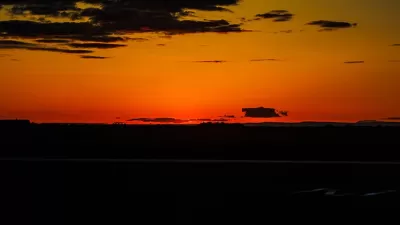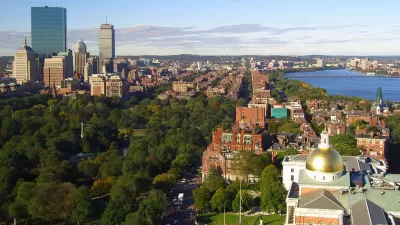As temperatures rise, there are some relatively simple changes cities can implement to cut cooling costs and deal with spells of extreme heat.

According to one study, the number of days in a year across the United States that feel hotter than 100 degrees Fahrenheit will more than double by mid-century. That's bad news for cities designed in ways that often exacerbate urban heat, Adele Peters writes. While broad infrastructural changes (and, ultimately, the elimination of fossil fuels) will do the most to combat an even hotter future, simple mitigation methods do exist for the heat that cities are already feeling.
When it comes to planting urban trees, "There are multiple benefits, but one is simple: As trees shade streets, and water evaporates from their leaves, they cool neighborhoods." Cities like Melbourne, Milan, and Madrid are all engaged in ambitious plans to grow out their urban forests.
Other cities, like New York, Los Angeles, and Tokyo, are covering rooftops and pavements with reflective coating. "The coating helps lower temperatures inside buildings, helping people feel more comfortable and use less air conditioning; like cars, air conditioners are both another major source of emissions and make cities immediately hotter as the machines vent heat outside."
Another way to fight urban heat is to equip structures with "smart" systems like automatic shades and windows programmed to respond to heat conditions, and to choose building materials with heat mitigation in mind. In the end, Peters notes, reducing automobile dependence will also play a role. "Cities that incentivize less driving—whether by redesigning bike lanes and sidewalks or changing codes to make new developments mixed-use and near public transportation—can cool themselves down."
FULL STORY: Cities are getting hotter, but we can redesign them to keep us cool

Study: Maui’s Plan to Convert Vacation Rentals to Long-Term Housing Could Cause Nearly $1 Billion Economic Loss
The plan would reduce visitor accommodation by 25,% resulting in 1,900 jobs lost.

North Texas Transit Leaders Tout Benefits of TOD for Growing Region
At a summit focused on transit-oriented development, policymakers discussed how North Texas’ expanded light rail system can serve as a tool for economic growth.

Why Should We Subsidize Public Transportation?
Many public transit agencies face financial stress due to rising costs, declining fare revenue, and declining subsidies. Transit advocates must provide a strong business case for increasing public transit funding.

How to Make US Trains Faster
Changes to boarding platforms and a switch to electric trains could improve U.S. passenger rail service without the added cost of high-speed rail.

Columbia’s Revitalized ‘Loop’ Is a Hub for Local Entrepreneurs
A focus on small businesses is helping a commercial corridor in Columbia, Missouri thrive.

Invasive Insect Threatens Minnesota’s Ash Forests
The Emerald Ash Borer is a rapidly spreading invasive pest threatening Minnesota’s ash trees, and homeowners are encouraged to plant diverse replacement species, avoid moving ash firewood, and monitor for signs of infestation.
Urban Design for Planners 1: Software Tools
This six-course series explores essential urban design concepts using open source software and equips planners with the tools they need to participate fully in the urban design process.
Planning for Universal Design
Learn the tools for implementing Universal Design in planning regulations.
City of Santa Clarita
Ascent Environmental
Institute for Housing and Urban Development Studies (IHS)
City of Grandview
Harvard GSD Executive Education
Toledo-Lucas County Plan Commissions
Salt Lake City
NYU Wagner Graduate School of Public Service




























